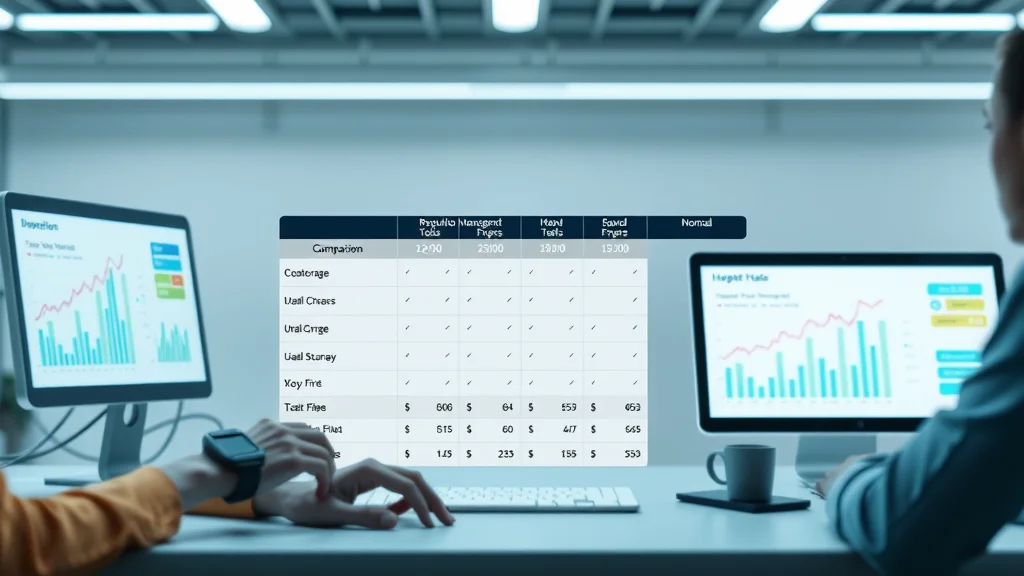Did you know that over 90% of consumers read online reviews before making a purchase, and more than half will skip businesses with a poor digital reputation? In today’s always-on, hyper-connected world, your online reputation can make or break your business. If you’re not actively managing how your brand appears on search engines and social media, you could be silently losing clients to competitors every single day. This comprehensive guide is your roadmap to mastering digital reputation management — giving you the tools to protect, enhance, and dominate your brand’s presence online.
A Startling Look at Digital Reputation Management: Why It Matters More Than Ever
The stakes have never been higher for digital reputation management. With every search engine result, tweet, comment, and online review, your business brand image is being shaped before clients even reach your door. Consumer trust is increasingly fragile—one negative review or a poor experience showcased on social media can quickly overshadow years of hard-earned goodwill. Studies reveal that just one negative review can repel up to 22% of prospective clients. So, what does this mean for you? It’s no longer enough to offer great services; you must vigilantly oversee all digital touchpoints. Managing your reputation isn’t just about damage control—it’s about setting the narrative, building trust and credibility, and ensuring potential customers find only the best about you when they search online. In the sections that follow, you’ll learn essential, actionable strategies to protect—and even boost—your place in the market, no matter the size of your business.

What You’ll Learn About Digital Reputation Management
- What digital reputation management is and why it’s critical
- Latest tools and proven strategies for online reputation management
- How to respond to negative reviews and protect your brand image
- Real-world examples that impact brand reputation
- Cost breakdowns and ROI for digital reputation management
Understanding Digital Reputation Management: Definition, Scope, and Impact
Digital reputation management is the practice of monitoring, controlling, and improving how your brand, business, or you as a professional are perceived across the internet. It spans social media interactions, search engine results, online reviews, third-party review sites, and mentions on digital news platforms. The scope is broad: from star ratings on Google reviews to tagged images on Instagram, everything shapes your online reputation. Effective reputation management means regularly scanning the digital landscape for negative reviews, feedback, and even positive reviews—then strategizing your response. The true impact? Consumers trust and credibility is directly tied to a brand’s digital reputation. Positive search results and glowing social media interactions can fuel growth and customer loyalty, while unaddressed negative feedback or incorrect search engine results can erode brand image and drive clients away. In a world where online reviews and public perception influence nearly every purchase decision, investing in strong reputation management is no longer optional—it's a must for long-term business success.

The Business Case: How Digital Reputation Management Prevents Client Loss
- The impact of negative reviews and poor search engine listings
- Statistics on consumer decision-making and online reviews
- Correlation between positive online reputation and customer retention
For every negative review that appears prominently in a search engine result, your business risks losing a significant portion of potential customers. Modern consumers trust and credibility in what peers and strangers say about your business even more than your marketing efforts. In fact, according to research, 84% of people trust online reviews as much as a personal recommendation. When negative content surfaces in search results or social media feeds, the credibility of your brand image nosedives. Companies that manage their online reputation with intention secure better retention rates, higher search engine rankings, and greater customer loyalty. On the other hand, ignoring your digital reputation can lead to client churn, reduced sales, and a tarnished public perception. By prioritizing digital reputation management, you make your online presence a business asset—turning every positive review into social proof that wins and keeps clients.

Digital Reputation Management vs. Online Reputation Management: Untangling the Terms
While some use them interchangeably, digital reputation management and online reputation management have subtle differences. Digital reputation management encompasses the full range of digital touchpoints—from your website and social media profiles to digital news and multimedia content. Online reputation management (ORM) is commonly referenced when dealing with online reviews, review sites, and search engine results. In practice, both focus on shaping public perception and controlling the narrative—but digital reputation management tends to be more holistic, covering everything that can be found about your brand online, including off-site mentions and user-generated content. The takeaway? Whether your approach leans digital or online, the crucial point is proactive engagement, real-time monitoring, and strategic responses to safeguard your reputation everywhere your customers interact with your brand.
Core Elements of Effective Digital Reputation Management
- Monitoring online reviews and feedback
- Managing social media and brand reputation
- Optimizing for search engines and controlling brand image
- Public relations strategies for digital crises
A robust digital reputation management strategy starts with vigilant monitoring of online reviews on trusted review sites and directories. It’s not enough to simply collect positive reviews—you must respond to negative reviews promptly and authentically, using every interaction as an opportunity to strengthen your brand reputation. Social media platforms are a double-edged sword; positive engagement can amplify your good reputation, while a single viral complaint can trigger a reputation management crisis. On the technical side, search engine optimization ensures that search engine results lead with positive, accurate information about your brand image rather than outdated or harmful content. Finally, a capable public relations plan is essential to steer the narrative and manage your reputation during digital crises, ensuring public perception remains favorable even in challenging moments.
Step-by-Step Guide: Managing Your Digital Reputation
1. Audit Your Digital Footprint with Reputation Management Tools
- How to assess online reputation through review aggregators and search engine results
- Identifying negative reviews and building a positive review strategy
The first step to effective digital reputation management is knowing where you stand today. Begin by searching your business name or brand on search engines and observe what shows up in the first two pages of search engine results. Use reputation management tools and review aggregators to scan online reviews from past and current customers across various review sites. Pay attention to customer feedback and flag negative content and positive reviews alike. Create a spreadsheet to record recurring negative comments, frequency of mentions, and prominent sources shaping your online reputation. With this audit in hand, you can build a targeted plan to address negative reviews, promote positive ones, and fortify your brand reputation across the digital landscape.

2. Develop and Enforce Brand Reputation Policies
- Internal guidelines for social media and online communications
- Training staff for consistent public relations responses
Consistency is key for managing brand image. Set clear internal policies for how your team should communicate on social media and respond to online reviews. Develop templates for common scenarios—like addressing a negative review or thanking someone for a positive review—to ensure messages reflect your business values. Train staff in digital etiquette and public relations crisis management so everyone understands their role in supporting your brand reputation. These proactive measures help maintain a cohesive, professional voice and enable your business to act swiftly when your online reputation is at stake.
3. Respond to Negative Reviews and Feedback
- Templates for responding to negative reviews
- Turning negative reviews into opportunities for positive reputation management
When negative feedback appears, responding quickly and empathetically can increase trust and credibility. Use positive language and offer solutions, transforming complaints into memorable customer experiences. For instance, a gracious reply to a negative review on a review site can signal to future potential customers that your business cares about customer feedback and takes action to resolve issues. Don’t ignore or delete negative reviews—instead, leverage each as a chance to demonstrate accountability and transparency, strengthening your overall digital reputation management efforts.

4. Amplify Positive Reviews and Client Testimonials
- Encouraging and leveraging positive reviews across social media and brand websites
- Sharing positive review stories to enhance your online reputation
Celebrate every positive review and testimonial by sharing them on your website, social media channels, and newsletters. Not only do these serve as trust signals for potential customers, but they also boost morale among your team. Create a system for politely requesting reviews from satisfied customers and make it easy for them to share their experiences. When positive feedback is showcased front and center, your brand reputation grows stronger, and new clients become more likely to trust your business. Remember, social proof is a cornerstone of modern online reputation management.

5. Monitor Social Media and Brand Reputation in Real Time
- Tools to monitor social media conversations
- Intervening early to protect digital reputation
Keep a real-time pulse on brand reputation and public perception by monitoring social media for mentions, tags, and messages. Social listening tools can alert you to newly posted content—positive reviews, customer feedback, or negative comments—giving you the chance to address issues before they escalate. Fast, friendly, and authentic responses on social channels show current and potential customers that your business is responsive, caring, and on top of its digital presence, a critical differentiator in today’s competitive landscape.
6. Public Relations in Digital Reputation Management
- Managing digital crises and negative publicity
- Crafting statements and controlling the brand narrative
Every business faces moments of challenge online, from negative reviews going viral to public misinformation. Having a digital crisis management plan ensures you respond calmly and effectively. Work with your PR team or experts to prepare holding statements and official responses in advance. Tailor content to fit the platform—short, reassuring posts on social media, and detailed explanations on your website or to journalists. Proactively manage your reputation by controlling the brand narrative, not just during crises but also as part of your everyday communications.

Table: Best Digital Reputation Management Tools Compared
| Tool Name | Key Features | Best For | Pricing (approx) | Competitor Coverage |
|---|---|---|---|---|
| Reputation.com | Review aggregation, listings management, sentiment analysis | Medium to large businesses | £250+/month | Strong |
| Birdeye | Online reviews, referral requests, analytics dashboard | Local and service businesses | £100+/month | Moderate |
| Brand24 | Social media monitoring, mention alerts, influencer tracking | Small to medium businesses | £49+/month | Good |
| Hootsuite | Multi-channel social posting, monitoring, scheduling | Agencies and teams | £39+/month | Moderate |
| Google Alerts | Free web monitoring with instant notifications | Everyone | Free | Basic |

Case Studies: Real-World Examples of Digital Reputation Management
- Local business reverses series of negative reviews through proactive reputation management
- Brand’s use of social media to repair online reputation after a public relations crisis
Consider a local café that saw its business plummet after a negative review went viral on social media. By responding thoughtfully to every piece of negative feedback and implementing changes based on customer feedback, the café rebuilt its online reputation. Within months, new positive reviews outnumbered the negative, and the café’s search engine results improved dramatically, restoring customer loyalty. Another example: a fashion brand facing a PR crisis used timely, transparent posts on social media to explain their side and address concerns directly. By managing the narrative and responding to customer comments, they restored trust and credibility, ultimately increasing their sales and standing online.

Quotes from Industry Leaders on Digital Reputation Management
"Your brand is what people say about you when you’re not in the room." – Jeff Bezos
"Online reputation management isn't an option; it's a necessity for business survival in the digital age." – Reputation Expert
Checklist: Daily and Weekly Tasks for Digital Reputation Management
- Review and respond to online reviews
- Monitor social media mentions and tags
- Audit search engine results for branded keywords
- Update positive review showcases on site and profiles
- Analyse recurring negative feedback themes

People Also Ask: What is Reputation Management in Digital Marketing?
Reputation management in digital marketing refers to the holistic approach businesses use to monitor, protect, and enhance their brand image online. It encompasses search engine optimization to control search results, proactive management of online reviews, rapid responses on social media, and implementing public relations strategies. The goal is to maintain a positive public perception, build trust and credibility, and ensure that when potential customers search your brand, they find the best representation possible. Effective digital reputation management can make the difference between being chosen or overlooked in a competitive digital marketplace.
People Also Ask: How Can You Manage Digital Reputation?
Managing your digital reputation starts with awareness. Regularly monitor online reviews, social networks, and search engine results using reputation management tools. Address negative reviews with empathy and provide solutions, while making it easy for satisfied clients to leave positive reviews. Share client testimonials on social media and your website, and stay alert to public mentions of your brand. Respond swiftly and transparently to crises using public relations best practices, and maintain consistent, positive brand messaging across all digital platforms to reinforce your good reputation.
People Also Ask: What are Examples of Digital Reputation?
Examples of digital reputation include a business’s average star rating on review sites, how quickly and professionally it responds to negative reviews, the trust and credibility built through its social media presence, and whether search engine results showcase positive news stories or harmful negative content. Other signs are strong customer feedback on online forums, influencer endorsements, and positive case studies or testimonials on the company site. All of these digital signals combine to shape how both search engines and potential customers view your brand reputation.

People Also Ask: How Much Does ORM Typically Cost?
The cost of online reputation management (ORM) can vary depending on your business needs and chosen tools. Small businesses may spend as little as £50-£200 per month on basic software and monitoring services, while larger brands handling significant media and search engine challenges can expect costs of £500-£2000 per month for comprehensive solutions, including public relations and crisis management. Investing in digital reputation management provides immense ROI by safeguarding revenue, customer retention, and long-term brand value.
FAQs About Digital Reputation Management
-
What’s the difference between digital reputation management and brand reputation management?
Digital reputation management is focused specifically on controlling all aspects of your online presence across search engines, review sites, and social media. Brand reputation management encompasses both digital and offline channels, such as word-of-mouth, press coverage, and community outreach. -
Do small businesses need online reputation management services?
Absolutely! In fact, small businesses are often at higher risk from a few negative reviews or poor search engine results, making reputation management a crucial investment. -
Can negative reviews be removed from search engines?
Most negative reviews can’t be removed unless they violate platform guidelines. However, with strong reputation management, you can push positive content to the top of search engine results and address negative content transparently. -
How do you measure return on investment for reputation management?
ROI can be measured by increased customer retention, rises in average star ratings, improved search engine rankings, higher website traffic, and, ultimately, increased sales and brand trust.
Key Takeaways for Digital Reputation Management Success
- Proactive reputation management prevents business losses
- Online reviews directly influence purchase decisions
- Social media and search engines are vital battlegrounds for digital reputation management
- Quick, authentic responses to negative reviews build trust
- Strategic public relations protects long-term brand reputation
Summary: Why Digital Reputation Management Is Non-Negotiable Today
Your business’s digital reputation is its most valuable asset. With purchasing decisions hinging on online reviews, search results, and social media narratives, investing in digital reputation management is no longer a choice—it’s a necessity for survival and growth in the digital age.
Take Action: Elevate Your Online Authority with Smart Digital Reputation Management
Don’t leave your business’s future to chance. Proactively manage your digital reputation, build trust with your customers, and turn every interaction into an opportunity for growth. To learn more about building your online authority, email us at smartmarketing@dylbo.com
Start taking control of your digital reputation today—only then will you truly stop losing clients and set your business on the path to lasting online success.
To further enhance your understanding of digital reputation management, consider exploring the following resources:
-
“Digital Reputation Management: How To Protect Your Brand’s Image” (forbes.com)
-
“Reputation Management and Social Media: Our Digital Footprints” (pewresearch.org)
These articles provide valuable insights into protecting your brand’s image and understanding the impact of social media on your digital footprint.
 Add Row
Add Row  Add
Add 










Write A Comment